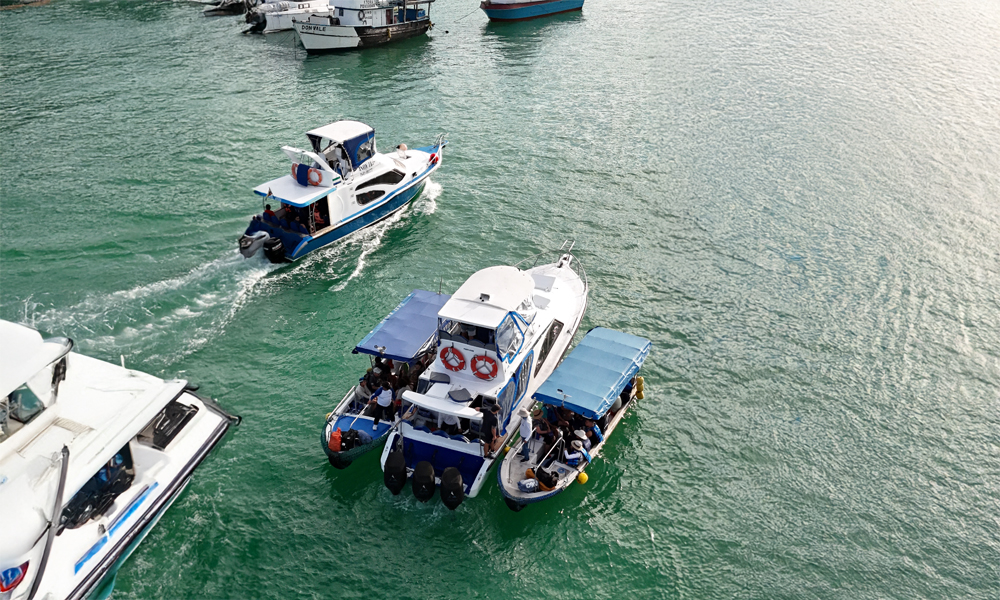|
•
|
||||||||
|
||||||||
|
|
||||||||

|
||||||||
|
As final year medical students from Australia, my brother Jono and I undertook a four week medical elective in Cuenca, Ecuador. After assisting in surgeries and partaking in a mobile surgical mission in the back of the back of a truck with the Cinterandes Foundation, Jono and I jumped on the plane to San Cristobal from Guayaquil. As we came into land, and as the sea gave way to the barren and sparse volcanic landscape of San Cristobal, it was a real “pinch yourself” moment. From a very young age I have always wanted to visit The Galapagos Islands, not only due to their renowned beauty and diversity of flora and fauna, but also because it is cradle of Charles Darwin’s theory of evolution by natural selection. This has formed the basis of our modern understanding of evolution, which is pretty significant when you think about it. After a quick taxi to the centre of town, we walked about lapping up the sights. I became immediately aware of the ubiquitousness of the wildlife. Sea lions wallowing in the sand bickering with each other, Darwin’s finches chirping from their varied perches and blue footed boobies arrogantly flapping their blue feet about. We spent the afternoon enjoying Lobiera beach, swimming in the pristine water with the local sea lions. Turns out they must think my Aussie birkenstock-wearing feet are tasty, as one particular individual tried to nip them several times! It was reassuring to see the conservation efforts of the local government and naturalist staff. Many places on the island are only accessible via paid tours, which I think is important in ensuring areas stay pristine and not overcrowded and sullied by too many tourists. This is what makes the Galapagos so unique, its unadulterated nature. I also really liked that the animals seem to live in congruence the humans, with unspoken mutual regard. The locals give them space and seem to respect their boundaries, which is important to ensure that their behaviour is not altered for the worse. The next morning, we awoke early, and after a scrumptious $6 “desayuno” from a local joint, we set off on our snorkelling tour to Kicker Rock. We were greeted by a tour guide, who had a salubrious grin and deep-rooted knowledge of the islands. As we sailed over the pacific chop, the rock grew bigger and bigger and eventually loomed over us. Kicker rock or León Dormido in Spanish, is named due to its resemblance to a boot or sleeping lion respectively. It is a remnant of a vertical tuff formation, rising out of the ocean 153m and is home to a plethora of wildlife, including stingrays, reef sharks, sea turtles, sea lions and most famously hammerhead sharks. From our boat we could see frigatebirds with their distinctive red gular pouch in display for the world. Boy was it a sight! After long day at sea, we set foot on land thirsty for a “cold one” as we say in Australia. Much to our surprise, there was a big celebration and parade commemorating a local event of significance. As we settled down to enjoy our happy hour beverage on the seafront, we revelled in the glory of the local culture and enjoyed the festivities as they continued into the evening. Isabella Island was our next stop, and two consecutive ferries and a smattering of seasickness got us there by around 4pm. This island had a sleepy feel to it and was lush and pregnant with wildlife. Galapagos penguins and sea lions darted around the pier waters as we hopped off the water taxi. Sea turtles cruised along the dock nibbling on whatever they could find. That afternoon we strolled along playa Isabela, as the sunset sprayed hues of red and gold across the equatorial sky. The locals told us this was the best sunset that they had seen in 10 years! The next morning, we awoke to drizzling rain. Nevertheless, we trudged our way to Concha de Pearla with our snorkelling gear. We were the only 2 people there so we had the area to ourselves, which was a luxury. Later in the day we hired bikes and rode along the Camino de Tortuga towards the Wall of Tears. We counted 7 tortoises along the way, many of them smack bangs in the middle of the path, cordially going about their business with not a care in the world. What baffled me was the sheer size of these animals, with some individuals weighing up to 417kg. They move so slowly, and I noticed that they are quite shy of humans, retracting their head into their shell and hissing if you get too close. “The mirador” at the Wall of Tears gave me a panoramic view of the island, and from this vantage point I was able to appreciate the distinctiveness of the tropical dry forest biome of Isabella. We finished off the day sipping on some cocktails at the Pink Iguana bar and sharing our Galapagos experiences with some fellow gringos. We concluded our tour of the Galapagos islands at Santa Cruz. This place was more densely populated with people and bustling with activity and nightlife. A walking tour of the Darwin Research centre yielded a multitude of facts and interesting tidbits about Galapagos history and animals. My favourite was that soil temperature determines the sex of Galapagos tortoise hatchlings. 26-29°C yields males, and 30-32°C yields females, so the scientists at the centre can manipulate temperatures to determine tortoise sex. We learnt about the story of Lonesome George, the famed last Pinta tortoise. Of the original 15 species of tortoise on the Galapagos, only 11 are left. Unfortunately, there is a sad history of habitat destruction and the endangering of species on these islands, from the introduction of feral animals to pirates using tortoises as a source of food on long voyages. But one of the things I have loved the most about the Galapagos is the great success of the conservation efforts, which exemplifies to the rest of the world what is achievable when time and resources are allocated to preservation of ecosystems. Writing this blog as I fly out of Seymour Airport in Baltra Island, I am completely captivated and mesmerized by the Galapagos and truly feel that this has been a once in a lifetime experience. I feel privileged to have enjoyed 7 escapade filled days on these unique and unparalleled islands. If you are thinking of visiting the Galapagos, don’t even have a second thought. Do it, and I promise you that you won’t regret your decision. That’s all from me now, signing out. |
||||||||
 |
 |
BLOG |
|
|
|
|
||||||
| © Galapagos a la Carte Galacarte S.A. | All rights reserved. | ||||||




|
||||||

|
||||||
|
||||||
 941
941









